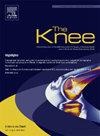Validity of wearable sensors for total knee arthroplasty (TKA) rehabilitation: A study in younger and older healthy participants
IF 1.6
4区 医学
Q3 ORTHOPEDICS
引用次数: 0
Abstract
Background
With 100,000 total knee arthroplasty (TKA) procedures taking place in the United Kingdom annually, the demand on rehabilitation services is high. Most regimes are home-based. Without clinician-patient interaction, detection of rehabilitation concerns can be delayed, reducing the chance of successful early intervention. Wearable technologies, such as MotionSenseTM (Stryker, US), may offer a solution to this problem by remotely supporting post-operative TKA rehabilitation through the provision of personalised rehabilitation and tracking of home exercises, enabling healthcare professionals to continuously monitor rehabilitation progress remotely. Validation of such devices against a known kinematic model in activities of daily living is important for confident interpretation of resulting clinical data. The aim of this study therefore was to validate the accuracy of MotionSenseTM against a clinical motion capture standard.
Methods
Twenty younger and 14 older healthy, able-bodied adults attended one testing session (Younger: 24 ± 4 years old; Older: 71 ± 5 years old). Movement was tracked using Vicon motion analysis and a Plug-In-Gait lower body model was applied to all participants. Three activities were performed – walking, stair ascent, stair descent. The knee flexion angle root mean square error (RMSE) between the technologies was determined.
Results
For both groups the knee flexion RMSE remained below 3° for all activities. The combined RMSE for all adults was 2.4° for walking, 2.7° for stair ascent, and 2.6° for stair descent. The signed error increased during the swing phase of gait.
Conclusion
MotionSenseTM was found to accurately estimate knee flexion angles during several common activities compared to Vicon motion capture.
用于全膝关节置换术(TKA)康复的可穿戴传感器的有效性:一项针对年轻和年长健康参与者的研究。
背景:英国每年有 10 万例全膝关节置换术 (TKA) 手术,因此对康复服务的需求很高。大多数康复治疗都是在家中进行的。如果没有临床医生与患者之间的互动,康复问题就可能被延迟发现,从而降低早期干预的成功机会。MotionSenseTM(史赛克,美国)等可穿戴技术可为这一问题提供解决方案,通过提供个性化康复服务和跟踪家庭锻炼,远程支持TKA术后康复,使医护人员能够持续远程监控康复进展。根据日常生活活动中的已知运动学模型对此类设备进行验证,对于自信地解释由此产生的临床数据非常重要。因此,本研究旨在根据临床运动捕捉标准验证 MotionSenseTM 的准确性:方法:20 名年轻人和 14 名老年人参加了一次测试(年轻人:24 ± 4 岁;老年人:71 ± 5 岁)。使用 Vicon 运动分析对运动进行跟踪,并对所有参与者应用 Plug-In-Gait 下半身模型。进行了三种活动--行走、上楼梯和下楼梯。结果显示,两组参与者的膝关节屈曲角度均方根误差(RMSE)均为0:结果:两组人在所有活动中的膝关节屈曲均方根误差都低于 3°。所有成年人的综合均方根误差分别为:步行 2.4°、上楼梯 2.7°、下楼梯 2.6°。步态摆动阶段的签名误差有所增加:结论:与 Vicon 运动捕捉相比,MotionSenseTM 能够准确估计几种常见活动中的膝关节屈曲角度。
本文章由计算机程序翻译,如有差异,请以英文原文为准。
求助全文
约1分钟内获得全文
求助全文
来源期刊

Knee
医学-外科
CiteScore
3.80
自引率
5.30%
发文量
171
审稿时长
6 months
期刊介绍:
The Knee is an international journal publishing studies on the clinical treatment and fundamental biomechanical characteristics of this joint. The aim of the journal is to provide a vehicle relevant to surgeons, biomedical engineers, imaging specialists, materials scientists, rehabilitation personnel and all those with an interest in the knee.
The topics covered include, but are not limited to:
• Anatomy, physiology, morphology and biochemistry;
• Biomechanical studies;
• Advances in the development of prosthetic, orthotic and augmentation devices;
• Imaging and diagnostic techniques;
• Pathology;
• Trauma;
• Surgery;
• Rehabilitation.
 求助内容:
求助内容: 应助结果提醒方式:
应助结果提醒方式:


